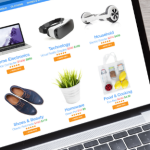5 Strategies for Better Cash Flow and a More Secure Business
1. Cash Flow Forecast
Accounting outsourcing services can help you with the balance sheet, income statement, and budget through this you a hazy image of how much cash is truly flowing in and out of your business, and how much you can anticipate being there next week when payroll is due as a business owner, you should review a cash flow statement and cash flow projection on a frequent basis to see how the following year, quarter, month, or even week will likely unfold.
Forecasting allows you to see how your cash flow will change in the future. In addition to your own schedule of payables, your present cash position, and a host of other considerations, it considers your company’s prior performance, the pace at which clients typically pay, and your currently projected receivables.
A cash flow projection offers you insight into your future cash flow, allowing you to foresee problems before they arise, rather than responding after it’s too late. As a consequence, you’ll be able to devise, plan, and implement new tactics to keep your company from succumbing to the negative effects of a cash flow crisis.
2. Data collection is the first step in forecasting
Let’s delve into the nitty-gritty specifics now that you understand the value of a cash flow prediction.
It all starts with ensuring that you have access to timely and accurate financial information. Data gathering is nearly completely responsible for accurate cash flow forecasts and good cash flow management.
Cash flow forecasting necessitates making an informed bet about your company’s future cash flow based on all of your company’s previous (correct) financial data, such as:
Revenue, costs, and profits in the past
- Your personal upcoming costs
- Payment policies for vendors
- Payment records of your customers
You will have accurate information at all times thanks to automatic data collecting that properly records the funds coming into and out of your firm. You’ll be able to anticipate your future cash flow as accurately as humanly feasible with data at your fingertips.
3. Receivables Management Best Practices
Receivables management is crucial. When it comes to receivables management, the most important thing to remember is to maintain money flowing into your company.
Consider applying the following best practices in managing receivables to avoid cash flow issues or to assist your company in overcoming a present challenge:
- Invoice on time and follow up on late accounts as soon as possible.
- Accept electronic payments to provide your customers with a variety of payment options. Electronic payment methods not only make it easier for your clients to pay you, but they also get the money into your account faster because you aren’t waiting for a check to arrive in the mail and then for cash to be collected in your account.
- Offer a discount on quick payments. If you’re having trouble getting clients to pay you on the final day of their payment term, consider rewarding early payment with a discount. Just make sure to double-check your profit margins before deciding on a discount rate, and make sure you have enough wiggle space, to begin with.
- Make changes to your payment procedures such that a deposit or partial payment is required upfront. This will improve cash flow by reducing days sales outstanding.
- By mandating a credit check on any new non-cash consumers, avoid payment delays and delinquent debts.
- Keep track of your receivables to spot clients that take a long time to pay. You may either change their payment conditions to guarantee that you are paid when you need it, or you can avoid doing business with them in the future.
As usual, make use of the technological conveniences offered to companies. Tasks that used to be time-consuming and involved a lot of responsibility may now be readily automated. With automatic invoicing, payment reminders, and fast collections, fully integrated software from firms like Bill.com relieves your bookkeeper’s workload.
4. Managing Payables to Improve Cash Flow
Payables management must be strategic in order to control cash flow and save your company in the case of a shortfall.
Consider implementing the following accounts payable best practices using this cheat sheet:
- Make use of your vendors’ payment arrangements to the fullest degree possible. If you don’t have to pay for 30 days, pay on the 30th day with electronic payments. This helps you to retain more cash in your business for longer, allowing you to put it to the greatest possible use until you have to pay a debt.
- Consider the actual savings and if your cash flow can handle the damage before paying early in return for a discount. While early payment discounts are an appealing method to save money on avoidable costs, they are not always worthwhile. They can sometimes feel like handing a vendor a zero-interest loan for the duration of your real payback period.
- Seek out payment options that are flexible. When it comes to vendors, you’re probably looking for the cheapest deal in return for the greatest product or service. You should, however, think about the payment conditions offered by the provider.
Keep in mind that the more money you keep, the higher your bottom line will be. So, before you forfeit discounts or pay more for flexible payment terms, think about whether you really need to forego possible savings for better cash flow management.
5. With optimized pricing, you can avoid shortages
One of the most prevalent causes of cash flow limitations in organizations has little to do with payment schedules and everything to do with pricing issues.
The most important choice every business owner will make is pricing. If you don’t charge enough for your services, you’ll have cash flow problems — end of the story.
So, how can you improve your cash flow by improving your pricing? Begin by determining the true value of your services so that you may demand the appropriate compensation.

Improve Cash Flow Management by Automated Processes
What do all of these cash flow management techniques have in common? The requirement for integrated software solutions to automate your back office.
Better cash flow management is not only conceivable but also achievable and inexpensive thanks to automation. You’ll save time and avoid cash flow problems by automating your bookkeeping and accounting operations.
You’ll always have access to correct financial data and cash flow figures, as well as properly scheduled invoices, collections, and bill payments, thanks to a smart back-office. Your company may win gold in the cash flow Olympics (if your cash flow management is this well-coordinated.
For stress-free and trusted accounting outsourcing services contact us today!


